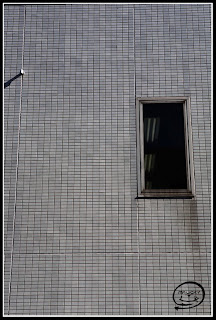2010/01/22
2010/01/21
2010/01/19
Mode Gakuen Tower
Mode Gakuen Cocoon Tower (モード学園コクーンタワー, Mōdo gakuen kokūn tawā?) is a 204-metre (669 ft), 50-story educational facility located in the Nishi-Shinjuku district in Shinjuku, Tokyo, Japan. The building is home to three Special educations: Tokyo Mode Gakuen (Fashion vocational school), HAL Tokyo (Special Technology & Design College), and Shuto Ikō (Medical College). Completed in October 2008, the tower is the second-tallest educational building in the world and is the 17th-tallest building in Tokyo. It was awarded the 2008 Skyscraper of the Year by Emporis.com.
Design
Before selecting a design for their new Tokyo location, Mode Gakuen held a competition asking architects to submit design proposals for the building. The only condition was that the building could not be rectangular. Mode Gakuen received more than 150 proposals by approximately 50 architects. The winning proposal was a cocoon-like structure designed by Tange Associates. According to Tange, the building's cocoon shape symbolizes a building that nurtures the students inside.[1] White aluminum and dark blue glass exterior form the structure's curved shell, which is criss-crossed by a web of white diagonal lines earning it the name "Cocoon Tower".[2] A Tange Associates spokesperson stated that their aim was to use the building to revitalize the surrounding area and to create a gateway between Shinjuku Station and the Shinjuku CBD.[3] The building's design earned the firm the Emporis.com 2008 Skyscraper of the year award.[2]
[edit] Facilities
Built on the former site of the now demolished Asahi Mutual Life Insurance Company Headquarters Building, construction of the Mode Gakuen Cocoon Tower began in May 2006 and was completed in October 2008.[4][3] The 204-metre-tall (669 ft), 50-story tower is the second-tallest educational building in the world (surpassed only by the main building of the Moscow State University) and is the 17th-tallest building in Tokyo.[4] The vertical campus can accommodate 10,000 students for the three vocational schools that occupy the building. Tokyo Mode Gakuen, for which the building in named after, is a fashion school. The other schools, HAL Tokyo and Shuto Ikō, are information technology and medical schools, respectively, that are operated by Mode Gakuen University. Each floor of the tower contains three rectangular classrooms that surround an inner core. The inner core consists of an elevator, a staircase and a support shaft. Every three floors, a three-story student lounge is located between the classrooms and faces three directions: east, southwest and northwest.[3]

Design
Before selecting a design for their new Tokyo location, Mode Gakuen held a competition asking architects to submit design proposals for the building. The only condition was that the building could not be rectangular. Mode Gakuen received more than 150 proposals by approximately 50 architects. The winning proposal was a cocoon-like structure designed by Tange Associates. According to Tange, the building's cocoon shape symbolizes a building that nurtures the students inside.[1] White aluminum and dark blue glass exterior form the structure's curved shell, which is criss-crossed by a web of white diagonal lines earning it the name "Cocoon Tower".[2] A Tange Associates spokesperson stated that their aim was to use the building to revitalize the surrounding area and to create a gateway between Shinjuku Station and the Shinjuku CBD.[3] The building's design earned the firm the Emporis.com 2008 Skyscraper of the year award.[2]
[edit] Facilities
Built on the former site of the now demolished Asahi Mutual Life Insurance Company Headquarters Building, construction of the Mode Gakuen Cocoon Tower began in May 2006 and was completed in October 2008.[4][3] The 204-metre-tall (669 ft), 50-story tower is the second-tallest educational building in the world (surpassed only by the main building of the Moscow State University) and is the 17th-tallest building in Tokyo.[4] The vertical campus can accommodate 10,000 students for the three vocational schools that occupy the building. Tokyo Mode Gakuen, for which the building in named after, is a fashion school. The other schools, HAL Tokyo and Shuto Ikō, are information technology and medical schools, respectively, that are operated by Mode Gakuen University. Each floor of the tower contains three rectangular classrooms that surround an inner core. The inner core consists of an elevator, a staircase and a support shaft. Every three floors, a three-story student lounge is located between the classrooms and faces three directions: east, southwest and northwest.[3]

2010/01/18
Subscribe to:
Comments (Atom)
















































